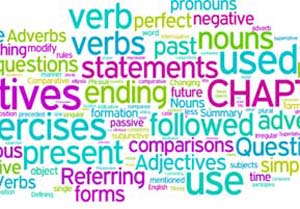 |
|
 |
|
| Visite: 2301 | Gradito: |
Leggi anche appunti:Comunicare: scambiare informazioniComunicare: scambiare informazioni mittente: la persona che č responsabile Relazione su "Una storia semplice" di Leonardo SciąsciaRelazione su "Una storia semplice" di Leonardo Sciąscia AUTORE Leonardo Don AbbondioDon Abbondio Don Abbondio č senz'altro il personaggio pił |
 |
 |


![]() Summary;
Summary;
![]() Kind of narrative structure (Gothic novel, Epistolary
novel, Science fiction);
Kind of narrative structure (Gothic novel, Epistolary
novel, Science fiction);
![]() Chinese box.
Chinese box.
![]() Why is "Frankenstein" considered a Gothic and a
Why is "Frankenstein" considered a Gothic and a
Science fiction novel
![]() Chinese box, narrative structure.
Chinese box, narrative structure.

![]()
 Letters Walton Margareth Saville
Letters Walton Margareth Saville
Monster's written report

![]()
![]()
![]() EPISTOLARY NOVEL Letters Walton M.
Saville
EPISTOLARY NOVEL Letters Walton M.
Saville

Present narration
 Description of the
ugliness of the
Description of the
ugliness of the
Monster and reactions of his creator

![]() GOTHIC
NOVEL Dreadful setting
GOTHIC
NOVEL Dreadful setting
Use of highly emotional language
![]() SCIENCE
FICTION Bring back to life.
SCIENCE
FICTION Bring back to life.

Mary Shelley wrote Frankenstein in 1816 in Geneva. The novel starts as an Epistolary novel in which an English explorer, Walton, describes his experiences in the Arctic to his sister. He tells her about his meeting with the scientist Frankenstein in his pursuit of the monster he has himself created. In fact the monster murdered Victor's brother, wife and friend. In the heart of the creature there was goodness and kindness, but humans had persecuted and rejected him, so he promised revenge to his creator. Frankenstein dies in the Arctic and the monster is so disgusted by his deeds of revenge that there is now only one course of action: he must kill himself.
The narrative comes back full circle as Robert Walton provides us with the final and unexpected climax to the novel.
We can distinguish three kinds of narrative structure: Epistolary novel, Gothic novel and Science fiction.
The "Chinese box" narration is very important in Frankenstein.
Popular in the sixteenth century the Epistolary novel is a collection of letters written by one and addressed to one or more people. An "Epistolary novel" is a group of letters collected and published as bibliographical or historical sources.
There are two kinds of Epistolary novel:
the narration is made of letters of more characters;
the narration is made of letters written only by the main character.
In the first type there are a lot of point of views, in the second type the letters are a type of personal diary.
The common characteristics of an Epistolary novel are:
the narrators are the characters;
the narration is at present.
We can consider Frankenstein an Epistolary novel because through some letters captain Walton tells the whole story of Victor Frankenstein and his monster.
a) The first part is in the Epistolary form, in fact Walton tells his sister about his first meeting with Frankenstein;
b) Frankenstein's own story follows, an autobiographical account of his dreadful experiences;
c) Within Frankenstein's narration is inserted a written report by the monster himself, in which he explains the reasons for his "monstrous" behaviour;
d) Finally, in the last pages the narration is resumed and concluded by Walton again, always in the Epistolary form.
This novel may be said to belong to the Gothic tradition of fiction, even if it differs from it in some important respects. Frankenstein is not set in a Gotic castle and it does not deal with supernatural events. It deals with a scientific experiment and the horror derived from the unexpected outcome: The Gothic element is to be found in the description of the monster's ugliness and in the reactions of his creator, in the dreadful setting and use of hightly emotional language.The theme of scientific research is connected to the development of science in the period and the desire the Romantics had to penetrate the secrets of life.
The tragic outcome of Frankenstein may be read as an implicit criticism of Romantic tendencies to rival God. At the same time it is a warning against the danger implicit in breaking natural laws. It also includes social themes, such as social injustice, as exemplified in the cruel treatment of the monster, and scientific themes, such as the possibilities and limits of scientific research, and the danger implicit in any attempt to overcome those limits. Because of the presence of these elements Frankestein is also considered the first work of science fiction.
The close relationship between feelings and setting and the emotional language are used here to create a positive atmosphere.The setting is a pleasant spring landscape.
It reinforces positive feelings and suggests a harmonious relationship between man and nature.
Frankenstein belongs in part to the Gothic tradition, so popular at the time , and partly to the eighteen-century philosophical tradition-going back to Rousseau-that made of themes such as isolation and social injustice fictional subjects. It can thus be defined as both a philosopical romance and a Gothic tale.
Of The tale of terror Shelly's novel possesses the highly charged emotional language and a prevailing atmosphere of suspense and danger. On the other hand, it differs from many tales of terror for ignoring certain features-castle and medieval or exotic trappings- and for substituting the supernatural with science. For treating the theme of scientific research and its ethical implications, Frankenstein has also been considered by some as the forerunner of science fiction.
Gothic novels are usually set against a background of wild and sinister landscapes, of inaccessible places and desert moors, of ancient castles full of secret passages and dungeons. And their main characters are generally men with an obscure past in the throes (in preda) of delirious passions, noble rescuers or wicked persecutors of beautiful, innocent and melancholy maidens.
Mary Shelley does not choose to tell her story chronologically. Instead, she takes us to a point towards the end of Frankenstein's story and introduces us to him by means or letters that a certain Robert Walton is writing to his sister. During the letters that precede Frankenstein's story, a connection is established between Walton and Frankenstein in that Walton is now fired by the sort or mad ambition that had once fired Frankenstein, and the latter decides to tell his story as a cautionary tale to Walton. At this point Frankenstein is not named and is called the traveller or the I stranger, so, at a first reading, we can only guess that this 'I ' is the man who has given his name to the book. Mary Shelley uses a number of characters who are reflectors of each other. In the opening of the book, Walton is a reflector of Frankenstein, manifesting the same ambition. During the book, we are introduced to other characters who reflect each other. All the women, for example, except Safie, are confined to the passive feminine sphere and have other resemblances. Clerval is a reflector of Frankenstein in that he represents those sides of himself that Frankenstein has suppressed: his aesthetic and moral sides. In the opening letters we are also made aware of Walton's sister, whose initials are the same as those or Mary Shelley, MWS: Margaret Walton Saville, Mary Wollstonecraft Shelley. lt has been argued that Walton's sister gives us a clue as to how we should read the text, that is, with a combination of sympathy and critical discrimination. This may be one reason why Mary Shelley chose the epistolary form. Another reason may be that she wanted to disguise her own voice as a woman by hiding behind not just one but two male narrators. We have to remember as we read that everything is being narrated to his sister by Walton, though he says later that Frankenstein has corrected his manuscript, particularly in the dialogues with the monster. We have a narrative, then, which has been described as forming three concentric circles with the monster's narrative at the heart of the book. The only thing wrong with the concentric circles idea is that it represents temporal relations spatially. For example, part or the monster's narrative overlaps in time with that of Frankenstein. Nevertheless, undoubtedly the monster's narrative is at the emotional centre or Frankenstein, just as in the original 1818 three volume edition it occupied all but thirty pages of the second volume. If the novel is about abandonment, as a number of modern, particularly feminist, critics have suggested, then the story of the abandoned creature occupies the centre of the novel. If the novel is about the threat to capitalism of the rising industrial working class, as Marxists suggest, then it is again appropriate that the story of the monster, who represents that class, should be at the centre of the novel. If we wish to look at the novel psychoanalytically, taking the monster as the symbolic representation of Mary Shelley's greatest anxieties as mother and author, then it is not surprising that his narrative should be embedded, repressed as it were, not beneath one but two other narrative voices. In this way Mary Shelley suppressed both her own female authorial voice and her most deep-rooted anxieties about motherhood by the narrative structure she chose for her first book.
We will now focus on an essential element in fiction, the narrator. Any story implies a narrator, that is, someone who tells the story. The narrator is not the same of the novelist, but a "persona" created by the novelist to tell the story. The narrator may be a character in the story and so tell events from inside the world of the story or simply a narrative voice. This narrative voice, in turn, can tell events from the inside or the outside and make itself felt in different ways in the narration. The choice of type of narrator determines the point of view from which the story is told, that is, an angle from which events are seen. This may be narrower or wider according to whether the narrator is inside or outside the story.
Structurally "Frankenstein" is an important link between the old and the new novel: it still relies heavily on XVIII° century forms such as the epistolary form and the long written or spoken confession, with a marked preference for indirect over direct speech; yet the three narrators' interplay provides a very interesting and modern shifting of the point of view.
This allows for some psychological analysis, if not of the characters as single individuals at least as typical of certain aspects of human nature. We are given first an ideal portrait of Frankenstein by Walton, as of a man who nobly and undeservedly sufters; then Frankenstein's portrait of himself, where already his boundless ambition begins to show its less pleasant side; and finally the monster's indictment of his creator as a selfish and cruel man.
The author shapes a novel to ensure that the purposes of the work are communicated effectively to the reader. He or she will choose to position events and ideas in a particular order and will decide to present them through particular forms.
The events in Frankenstein do not happen in chronological order. The novel begins after most of the action has already happened. To understand the mystery behind Walton's sighting of the creature and the decayed condition of Victor, the author returns to the past by using flashback. We go back to Victor's childhood and life at university but then William's murder creates a new mystery. In order to understand the lead-up to this event, Shelley turns the clock back to the early years of the monster. The two stories then converge. The final section of the novel explores the relationship between the creature and Victor.
 |
| Appunti su: content, chinese box structure frankenstein, |
|
| Appunti Inglese |  |
| Tesine Educazione pedagogia |  |
| Lezioni Grammatica |  |